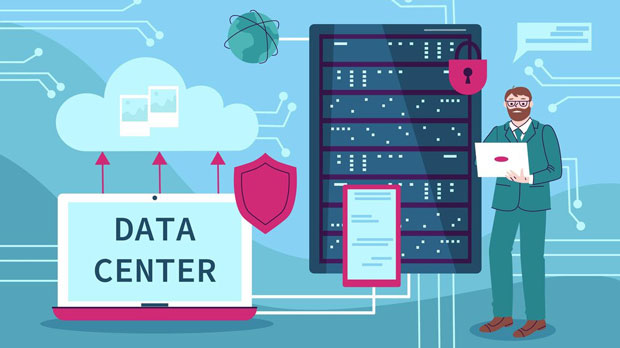In the world of e-commerce, account protection is a critical aspect of business continuity, and one that sellers, especially in online marketplaces, must approach strategically. To prevent account suspension or banning, businesses often deploy various strategies, one of which includes using proxies. Among the different types of proxies, residential proxies are often considered an ideal solution due to their authenticity. However, when opting for "cheap" residential proxies, one must question whether they truly offer effective protection or if they bring more risk than reward. In this article, we will dive into whether cheap residential proxies are an effective solution for e-commerce account protection, exploring their advantages, potential issues, and alternative approaches. Understanding E-commerce Account ProtectionE-commerce platforms, especially large-scale ones, have systems in place to protect their marketplaces from fraudulent activity, bots, and other threats. As a result, accounts that exhibit suspicious behavior such as unusual login times, location shifts, or excessive actions like bulk posting or product scraping are often flagged and eventually banned. For e-commerce businesses, protecting their accounts from these kinds of risks is crucial for their success. This is where proxies come into play. Proxies act as intermediaries between the user and the e-commerce platform, masking the true IP address, which helps in preventing account flagging. Among proxies, residential proxies are considered the gold standard due to their ability to mimic real user traffic. However, as the demand for proxy services grows, the market has seen an increase in cheaper residential proxies, raising concerns about their effectiveness.What are Residential Proxies and Why Are They Used in E-commerce?Residential proxies are IP addresses provided by Internet Service Providers (ISPs) to homeowners. They are used to route internet traffic, making the request appear as if it’s coming from a legitimate user, thus mimicking real user activity. For e-commerce businesses, the appeal of residential proxies lies in their ability to bypass geo-restrictions, avoid IP bans, and remain undetectable by anti-bot systems.E-commerce sellers often use residential proxies to:1. Scrape competitor pricing, listings, and products.2. Test pricing strategies in various geographic regions.3. Access different accounts without triggering suspicious activity alerts.4. Conduct market research without revealing their identity.The legitimacy of residential proxies plays a vital role in ensuring that these activities go unnoticed by anti-fraud systems.Cheap Residential Proxies: What’s the Catch?When businesses look for cost-effective solutions, cheap residential proxies often come to mind. On paper, they seem like a viable alternative to expensive, high-quality proxies, offering a similar service at a fraction of the cost. However, as with any low-cost service, there are potential drawbacks that must be carefully evaluated before deciding whether cheap proxies are the right choice.1. Quality of IP Addresses Cheap residential proxies are often sourced from unreliable networks, which may include IPs from low-quality, suspicious sources. Many of these proxies are flagged by e-commerce platforms and anti-fraud systems, causing higher detection rates and an increased risk of account suspension.2. Proxy Pool Size A smaller proxy pool can lead to a high number of requests coming from the same IP address, which makes it easier for e-commerce platforms to identify unusual behavior. A larger, diverse pool of proxies reduces the likelihood of detection, but cheap providers often have limited or unreliable proxy pools.3. Speed and Reliability Cheap proxies often suffer from slower speeds and higher latency due to overcrowding and lack of maintenance. This can result in delays in processing orders, slower site scraping, and in general, a negative user experience that can further raise flags.4. Security Concerns Low-cost proxy providers may not prioritize the same level of security as reputable ones. This could expose users to data breaches or leaks. Additionally, some cheap proxies might even be part of botnets or malicious networks, which could further compromise the e-commerce seller's operations.5. Customer Support One of the significant downsides of cheaper services is the lack of reliable customer support. In cases of proxy malfunction, users may find it challenging to resolve issues promptly, potentially leading to longer downtimes and negative consequences for business operations.Effectiveness of Cheap Residential Proxies in E-commerceWhile cheap residential proxies may provide an immediate, cost-effective solution, they often fail to offer the same level of protection and security as premium options. The effectiveness of cheap proxies in e-commerce account protection largely depends on the quality of the service provided. Here's a breakdown of the factors that impact their effectiveness:1. Detection Avoidance The primary goal of using residential proxies is to avoid detection by e-commerce platforms. Cheap proxies often come with higher detection rates due to poor IP address quality, resulting in a higher likelihood of account bans or restrictions.2. IP Reputation High-quality residential proxies come from reputable networks, which have lower chances of being flagged by anti-bot systems. Cheap proxies, however, often come from dubious networks, resulting in a poor reputation and greater chances of being blacklisted by e-commerce platforms.3. Operational Efficiency In e-commerce, time is of the essence. Slow proxy speeds and connectivity issues can directly affect the efficiency of operations such as order placement, product listing, or customer interaction. Cheap proxies often suffer from these problems, hindering the ability to conduct business smoothly.When Should You Consider Cheap Residential Proxies?There are scenarios where cheap residential proxies may still be considered a viable option for e-commerce businesses:1. Limited Use Cases If the business requires proxies for light, non-sensitive tasks, such as gathering publicly available data, cheap residential proxies could be an option. However, for tasks requiring a high level of security or consistency, such as managing accounts or placing orders, premium proxies should be preferred.2. Testing and Experimentation For businesses that are just starting to explore proxy services, cheap proxies can serve as a testing ground to evaluate the benefits and limitations. This allows businesses to experiment with proxy usage without significant upfront investment.Alternatives to Cheap Residential ProxiesFor e-commerce businesses serious about account protection, there are better alternatives to cheap residential proxies:1. Premium Residential Proxies While more expensive, premium residential proxies come from trustworthy networks, ensuring a high level of security, speed, and reliability. These proxies are less likely to be flagged, making them ideal for serious e-commerce sellers.2. Data Center Proxies In some cases, data center proxies can provide the speed and reliability that cheap residential proxies lack. Although they may not offer the same level of "natural" user experience as residential proxies, they are still effective for many e-commerce use cases.3. Rotating Proxy Networks Services that offer rotating proxies help to distribute requests across different IPs, making detection harder for e-commerce platforms. These services can often offer a balance between affordability and security.While cheap residential proxies might seem like an attractive, cost-effective solution for e-commerce account protection, they come with significant drawbacks that can impact their effectiveness. Issues such as poor IP reputation, slower speeds, and higher detection rates can expose your accounts to bans and suspensions, ultimately harming your business. For serious e-commerce operations, investing in high-quality, premium residential proxies or alternative proxy services is a more effective and secure strategy. Ultimately, businesses should prioritize security and reliability over short-term cost savings to ensure long-term success in the e-commerce world.
Oct 16, 2025


































































